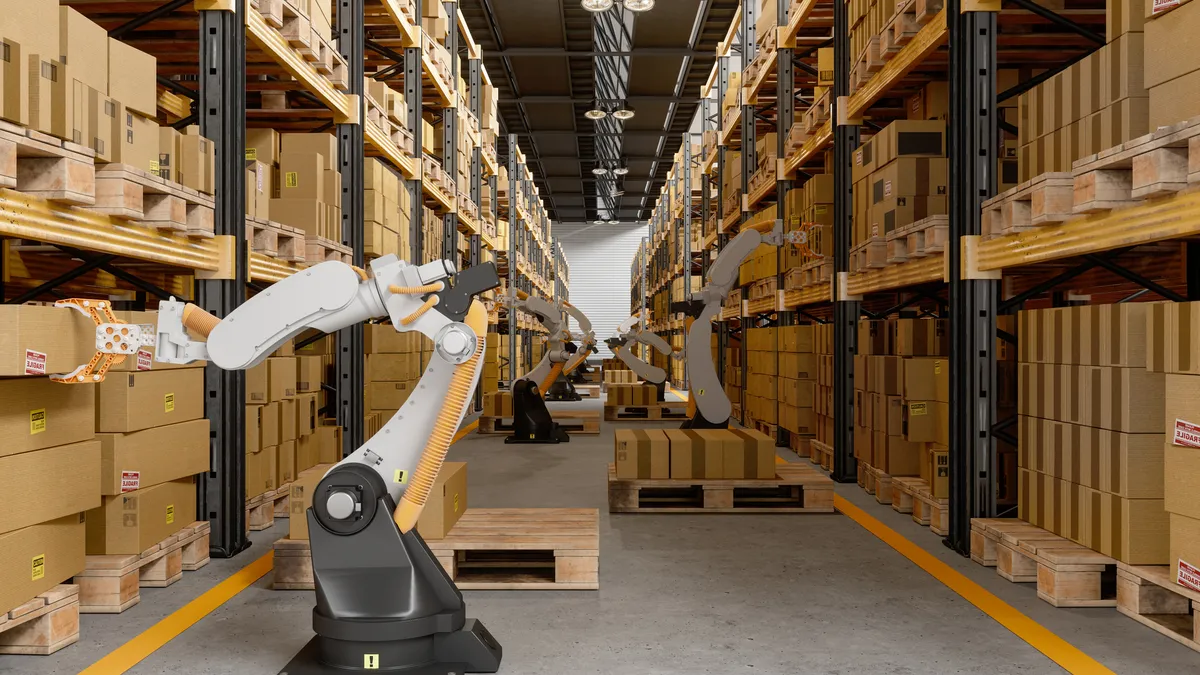Leaders in distribution center management must rapidly react to take advantage of new technologies and best practices to meet evolving customer demands. In this article, we'll share current distribution center best practices and offer a peek into the exciting potential of the distribution center of the future.
Increased automation for order fulfillment
As we've already seen happening at large retailers and logistics operations, many parts of the fulfillment process can be partially or fully automated. Much of the challenge around automation relates to the size of the package.
Current robotics and distribution center automation technologies can easily move many items and packages. However, machines struggle if the item or package can't conform to a cube or traditional box shape, requiring extra attention for packing and unloading.
It may take some time for machines to learn how to handle nonconforming packages and items. But for lightweight items that fit into a traditional-shaped box, automation like carton sealing machines is already available—and will continue to appear in distribution centers worldwide.
Large warehouses play an important role
The old distribution center relied most heavily on large, centralized warehouses. As customer preferences and needs change, and companies compete on speed as well as price, the single-tier distribution network will cease to be viable. However, large, bulky, and long-tail items are best kept in the bigger, centralized distribution centers in rural areas that are associated with lower storage cost.
Smaller distribution centers will enable faster deliveries
The most efficient distributors may use four layers in their networks:
- Large Distribution Centers: Large, centralized distribution centers, likely in rural or low-cost areas.
- Cross Docks: Smaller facilities enabling rapid unload, transfer, reload, and shipping operations.
- Regional Distribution Centers: Mid-sized buildings that are ideal for pallets and cases rather than truckloads.
- Forward Deploy Fulfillment Center (FDFC): The smallest and higher-cost facility located very close to end consumers, potentially in lockers or large office buildings.
The fourth layer is the newest addition to the distribution center model. If you've ever walked into a grocery store and noticed a designated area for third-party pickups, these are considered a type of FDFC. They are a growing part of consumer-focused distribution networks.
Consider people who live in large apartment complexes. With FDFCs becoming more prevalent, they could place an order for necessities like batteries and have them available for pickup without needing to leave their building.
Larger FDFCs can be up to the size of a retail store. These put commonly-purchased goods so close to consumers that you can reasonably provide same-day or next-day delivery.
Detailed forecasting required to keep up
Computers, robotics, and automated conveyors quickly move items from place to place around warehouses. But with so many moving parts and as many as four distribution layers, incredibly detailed forecasting is required for everything to work smoothly.
Inventory, forecasting, and placement are among the most critical challenges facing distribution and logistics companies today. To ensure the right item is at the right place at the right time, your business must rely on hard data. Poor estimates lead to higher costs, higher inventory needs, and slower distribution.
Businesses can use their data to forecast which products are destined to sell when, and at what volume. But remember: Customers aren't likely to want every product for same-day delivery, on the same day. Keep your selections tailored to anticipated demand.
Get ready for dark distribution centers
Some distribution centers run on machine labor only. Many operations that ship products easily fitting into cube or box shapes can be automated almost entirely, creating the opportunity for these "dark" distribution centers. Large facilities that only distribute box-shaped items may be able to run with only a few employees to oversee the system and resolve exceptions as they arise.
Expect more automation for any distribution-related task that can be easily repeated and mechanized. But human labor isn't going away. The next challenge for distribution companies is to mix human and machine labor to increase efficiency.
While you can expect distribution centers to continue to evolve, they are not going away anytime soon. As a leader in distribution and material handling for over 70 years, Global Industrial can supply the equipment and expertise you need to prepare for the future.






